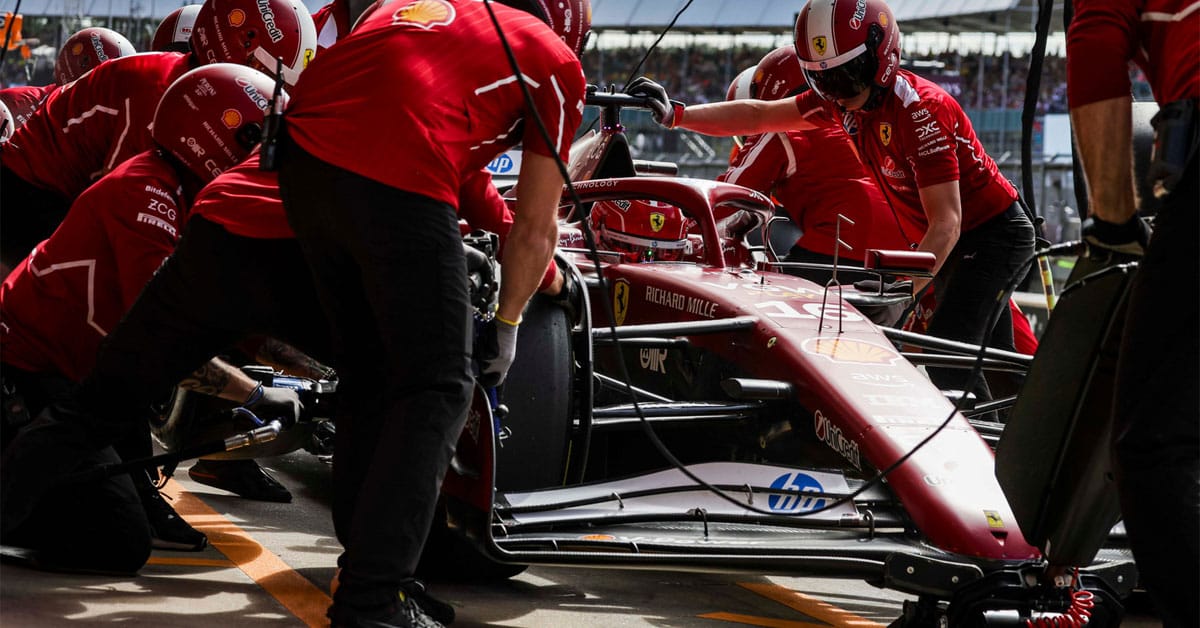Formula 1 is seriously considering a rule that could completely change the dynamic of Grand Prix weekends: the introduction of two mandatory pit stops during races. According to recent discussions within the F1 Commission, this topic — which has been circulating in the paddock for months — could soon become a central point of debate. The idea behind it is to increase on-track action and improve the overall spectacle.
A previous experiment that didn’t work at all
This subject will be discussed during the next F1 Commission meeting, especially since Pirelli tyres have become increasingly durable, leading teams to minimize their pit stops whenever possible. A similar experiment was already attempted earlier this season at the Monaco Grand Prix, a race that is often criticized for its lack of overtaking and overall excitement, particularly with the current generation of cars.
That test, however, turned out to be a complete disaster. Some teams sacrificed one of their drivers to benefit the other, while others, such as Mercedes, appeared completely lost and found themselves at the back of the grid even before the race had truly begun. It was a scenario that confirmed how forced strategies can sometimes have counterproductive effects.
A comparable situation had also occurred in Qatar in 2023. In that case, however, the FIA and Formula 1 were forced to impose a limit on the number of laps per tyre due to the sharp curbs at the Doha circuit, which posed serious safety risks. That temporary rule effectively forced teams into multiple pit stops, though it was not intended as a permanent regulation.
This could nevertheless serve as one of the reference points should Formula 1 actually adopt the two-stop rule in the future, although many insiders believe that such an approach would be the least practical from both a sporting and strategic perspective.
F1’s double pit stop: will the tyre compound rule disappear?
The F1 Commission is reportedly evaluating two very different approaches to the potential new rule, each with its own advantages and drawbacks.
Option one: Two mandatory pit stops with the use of all three tyre compounds — soft, medium, and hard. This proposal makes some sense in theory, as it would ensure a variety of strategies and tyre management challenges. However, it also carries a major risk: creating identical stint structures across all teams. Such predictability could lead to races with “programmed” pit stops, similar to what was seen in Qatar two years ago. For this reason, many believe it wouldn’t add much excitement.
Option two: The second idea is far more appealing and reminiscent of “old-school” Formula 1. It would allow teams complete freedom in their tyre choices, meaning they could even run the entire race on a single compound if they wished, as was the case in the early 2000s. This scenario could offer much greater strategic diversity, even with the two-stop obligation still in place, giving teams more flexibility to adapt their race plans.
The main motivation behind this discussion lies in Formula 1’s ongoing struggle with overtaking. Despite the aerodynamic changes introduced with this generation of cars, following another car closely remains extremely difficult. As a result, many races have become processional, prompting the FIA to search for creative — though sometimes questionable — fixes to improve the show.
However, many insiders believe that the real solution might not lie in gimmicks like mandatory pit stops. As some suggest with a hint of nostalgia, Formula 1 could simply bring back refueling — a change that, according to several fans and engineers, would naturally restore the strategic depth and unpredictability that the sport has gradually lost over the years.
Nov 4, 2025Elena Rossi
Let other Scuderia Fans know about us


